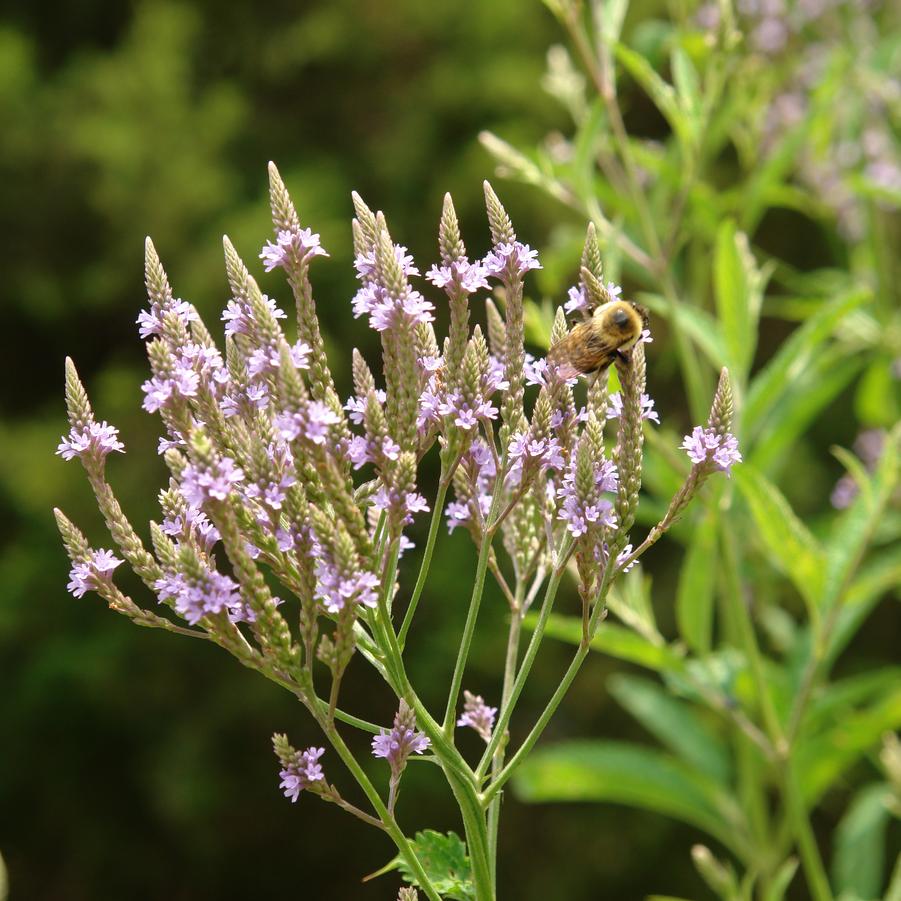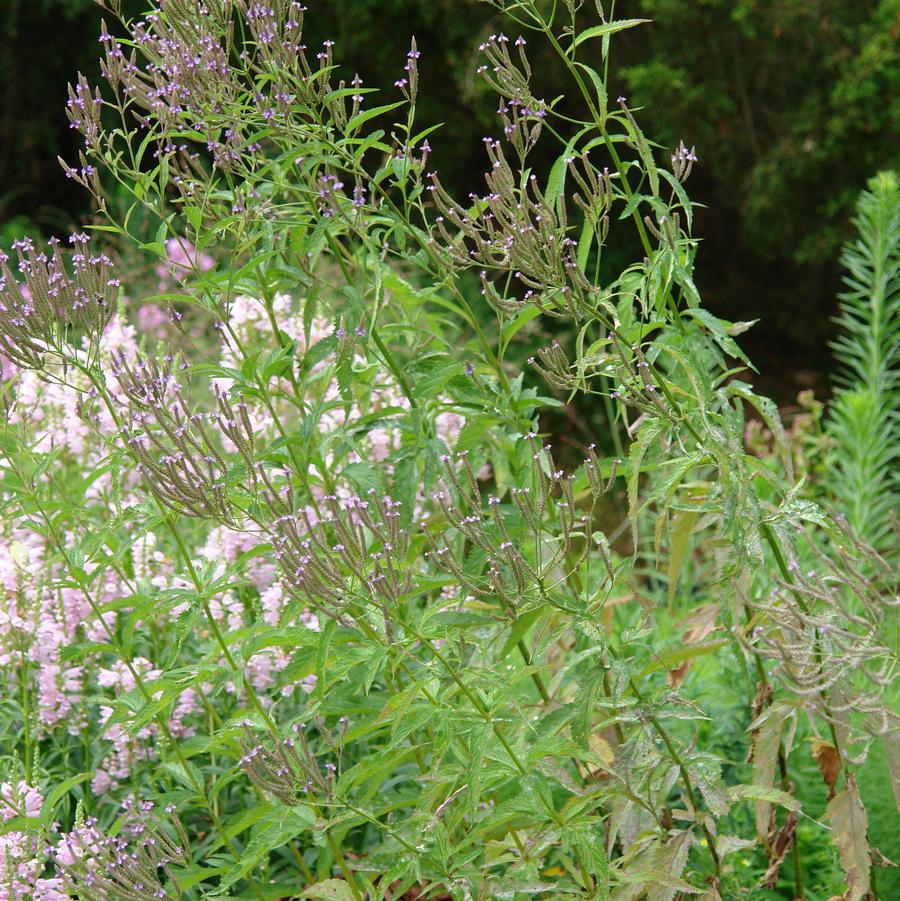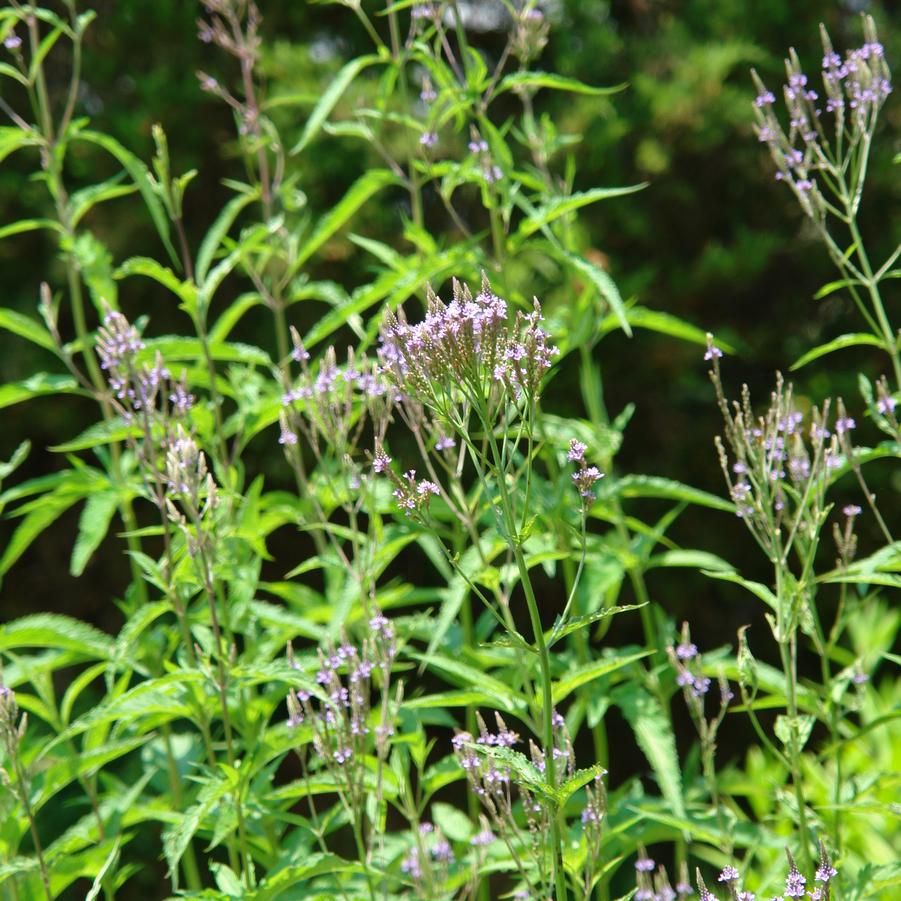





Plant Calculator
Enter the approximate length and width of the area you will be planting and click 'Calculate' to determine how many Verbena hastata you will need.
Correct and successful spacing is complex and depends on project conditions. We encourage you to call us at 877-ECO-PLUG for project specific recommendations and further assistance.
Verbena hastata
swamp verbena
- Category: Perennial, Native
- Hardiness Zone: 3-9
- Height: 4-6 Feet
- Spread: 2-3 Feet
- Spacing: 12-18 Inches
- Bloom Color: Violet
The tall, thin spikes of Blue Vervain grace the wet meadows of the US in July and August. Verbena hastata is a short-lived perennial that readily self sows where happy. A great plant for pond's edge where it seeds in between sedges and rushes and cheerfully holds its own.
Exposure
| • | Full Sun |
Wetland Indicator Status
| • | Falcutative Wetland (FACW) |
Plug Type
| • | Landscape Plug™ |
Propagation Type
| • | Open pollinated |
Additional Information about Verbena hastata
The tall, thin spikes of Verbena hastata grace wet meadows with touches of violet-blue throughout the entire US in July and August. Blue vervain is a short-lived perennial that readily self-sows where happy. Growing anywhere from 2-6’ tall and 2-3’ wide, the candelabra form of this native is attractive with the unusual flower spikes lending interest to the garden. It can create colonies by slowly spreading rhizomes and is a great plant for pond's edge where it seeds in between sedges and rushes and cheerfully holds its own. It is an excellent native substitute for invasive exotic species such as European wand loosestrife, purple loosestrife, and purple foxglove.
Verbena hastata prefers moist to average, well-drained, moderately acidic soils in full sun. It can tolerate drier soils, but prefers to stay moist while tolerating periods of inundation. With its native range throughout the most of North America, blue vervain can be found in disturbed habitats, marshes, meadows and fields, shores of rivers or lakes, and wetland margins. The plant spreads slowly by rhizome or by seed. Due to the toxic nature of the foliage, it is rarely browsed by animals and does not succumb to pest and disease.
Swamp verbena is a workhorse in the landscape. Thriving in naturalized areas, Verbena hastata also performs well in borders, meadows, prairies, native plant gardens, and pollinator gardens. Of special importance to native bee populations, it also supports a plethora of wasps, flies, butterflies, skippers, and moths. It is key to the specialist bee, verbena bee, and is a larval host of the buckeye butterfly. Small native songbirds consume the ripened seed. The foliage of the plant is toxic and can interfere with blood pressure medication or hormone therapy if consumed in sufficient quantity.
Growing & Maintenance Tips for Verbena hastata
Verbena hastata prefers moist to average, well-drained, moderately acid soils in full sun. Can tolerate drier soils, but prefers to stay moist. Tolerates periods of inundation.
